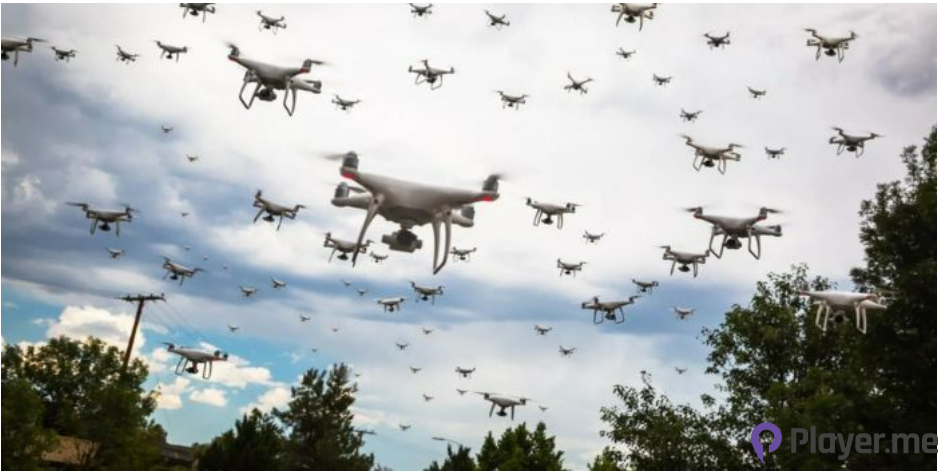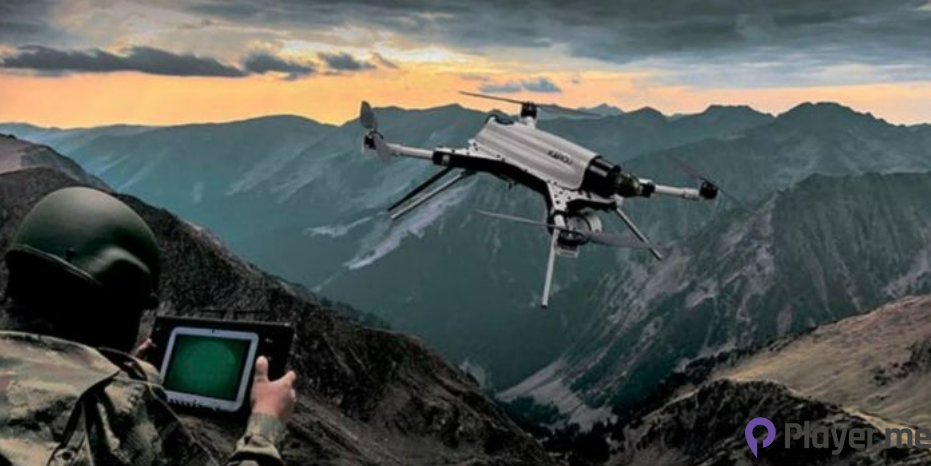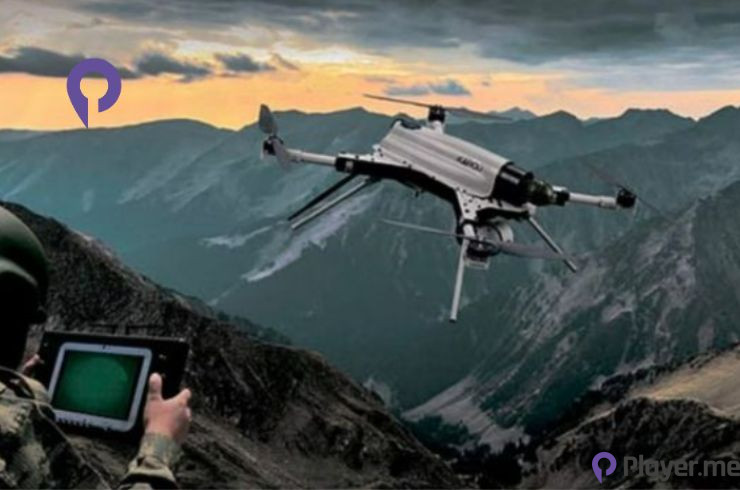In the age of Artificial Intelligence (AI), nations across the globe are racing to harness this transformative technology for a multitude of applications. Wall Street Journal (WSJ) revealed that the United States Department of Defense (U.S.DOD) has unveiled a bold and comprehensive plan aimed at producing a substantial fleet of AI-driven drones.
Just last week, the Pentagon introduced its groundbreaking initiative known as ‘Project Replicator’. This project is designed to usher in a new era of innovation within the U.S. military, promising to reshape its strategies profoundly. The primary objective underpinning this ambitious strategic shift is the preparation for potential challenges posed by China, reflecting the U.S. government’s commitment to safeguarding its national interests and security in an increasingly competitive global landscape.
The Pentagon aims to use AI technology in various autonomous systems, including air and sea-based drones. This article will provide a clear insight into the Pentagon’s AI drone technology and the sole purpose behind its creation.
Also Read: Why China Remains Hungry for AI Chips Despite U.S. Restrictions
The Growing Concept of AI Drones
Drone AI technology is quite the latest concept in the realm of the AI world. The heart of conventional drones lies in high-resolution image sensors and LiDar sensors. The latest AI drone technology works on ‘Computer Vision’. The technology takes visual inputs and makes suggestions for further actions.
These AI drones use neural networks for object detection purposes. Properly equipped drones can be set to function automatically. AI drones, aka Unmanned Aerial Vehicles (UAVs), can recognise an abnormality in functioning and have proper alert systems to address them.
Successful AI technologies aimed to be introduced in drones will be equipped with GPUs, highly maintained algorithms, and a large pool of data.
Pentagon’s Ambitious Plan

The People’s Republic of China (PRC) has already made well-recognised developments in its military department, let alone the troop size. It has crossed the U.S. military with its large number of ships and missiles. That has pushed the Pentagon to take a step to innovate military tech aimed to pace with Beijing’s military advancements.
The U.S. Deputy Secretary of Defense, Kathleen H. Hicks, in an interview, stated the intentions behind the interest in the AI Drone project. She says, “We are not at war, neither are we seeking to be at war, but have to be able to get this department to move with that same kind of urgency because the PRC isn’t waiting”.
McCaul Warns of China’s AI Challenge and Tech Export Risks

In a recent interview with Fox News Digital, Representative of Texas, Michael McCaul, addresses the competition for AI supremacy and the race between the U.S. and Russia. He emphasised his concerns regarding China’s increasing dominance in leading the world. According to him, the U.S. must win this AI fight. Failing to do so can lead China to overtake both the military and the global economy.
McCaul also mentioned the need to stop selling U.S. technology to China, as China can utilise such technology for developing advanced weaponry. The creation of advanced computer chips and AI has placed nations under pressure. Consequently, the U.S. has restricted investments in Chinese chip manufacturers. In contrast, China has labelled U.S. chips from companies like Micron as a security risk, which you can read here.
Pentagon’s AI Drone Technologies

Pentagon’s scientists are all set to introduce the world with a mesh of networks of drones, devices that work by themselves without the need for external operations. These drones need a communication system, mainly Droidish. It’s like a language that allows drones to talk to each other, similar to how R2D2 communicated with C3P0 in Star Wars.
In a test supported by the Air Force, three drones were programmed to fly close to each other without colliding. They were programmed to navigate their path, ensuring safe navigation. Gambold, a former British Air Force pilot, demonstrated the experiment by saying that it may sound quite simple, but it took a huge amount of code to make it work. You can also read https://player.me/5-benefits-of-using-shield-ai-in-defence-and-security/ to learn how AI can benefit defence and security.
Future of AI-Driven Warfare

With Ukraine’s extensive use of drones and threats of China’s advancing military, America’s best agency will soon implement AI technology in its drones. After researchers break the codes, the advanced AI-driven drones will be launched together, working among themselves.
These technologies have aroused many questions among the nations. Sceptics argue that reducing human involvement in military operations like these raises ethical concerns, as mentioned in https://player.me/tim-burton-believes-ai-robot-is-taking-your-humanity/. Though the Air Force is positive in its interventions and has considered AI as a tool, not a weapon.
Conclusion
The global community eagerly observes the U.S. as it aims to manufacture AI-powered drones to strengthen its national defence. With the advancements in these projects, profound ethical inquiries regarding the future of warfare also arise. The Department of Defense, however, underscores the significance of using AI responsibly and strategically in an increasingly AI-driven world.
This perspective highlights the commitment to employing AI technology for defensive purposes while upholding ethical principles, demonstrating the importance of ethical considerations in the realm of military innovation.
Frequently Asked Questions
Why Is the Pentagon Investing in AI Drones?
The Pentagon’s main purpose in investing in AI drones has already been discussed above. Other than that, AI drones will give the U.S. a competitive advantage on the battlefield. These drones can be shared for electronic warfare, too, increasing the effectiveness of operations.
How Do AI Drones Differ from Traditional Military Drones?
AI drones are made to work more efficiently with their semi-automated features. These drones use machine learning algorithms to identify targets and make decisions. At the same time, traditional drones rely on human operators for decision-making. AI drones can communicate with each other, forming networks to achieve common objectives. Traditional drones typically do not have built-in communication.
What Is the MECE Framework?
MECE framework stands for the “Mutually Exclusive, Collectively Exhaustive” approach in problem-solving and data analysis. This principle is used in consolidating the research into final groups. Combining all the possible aspects of the research to make it cover every possible scenario is done with MECE.





